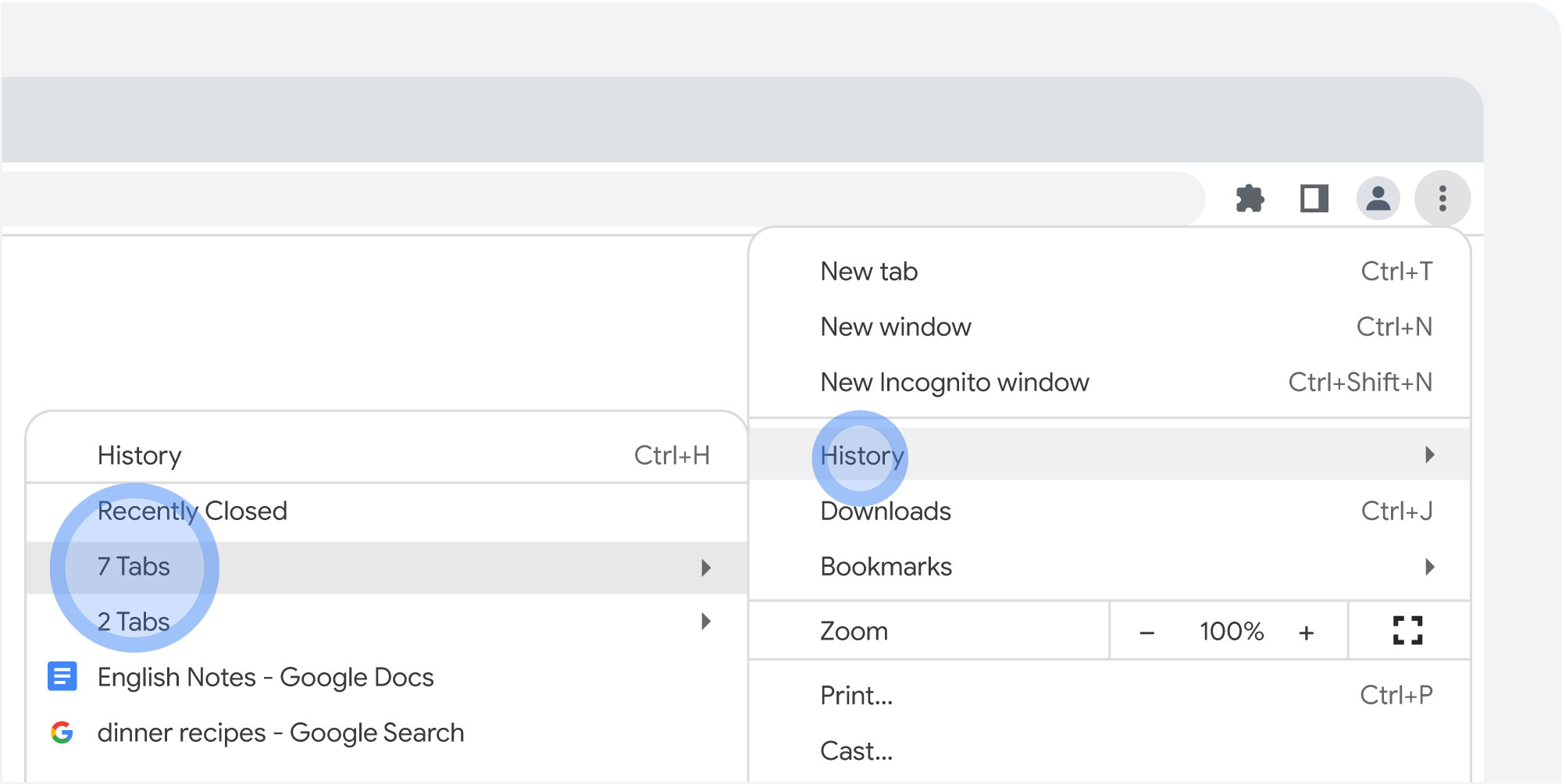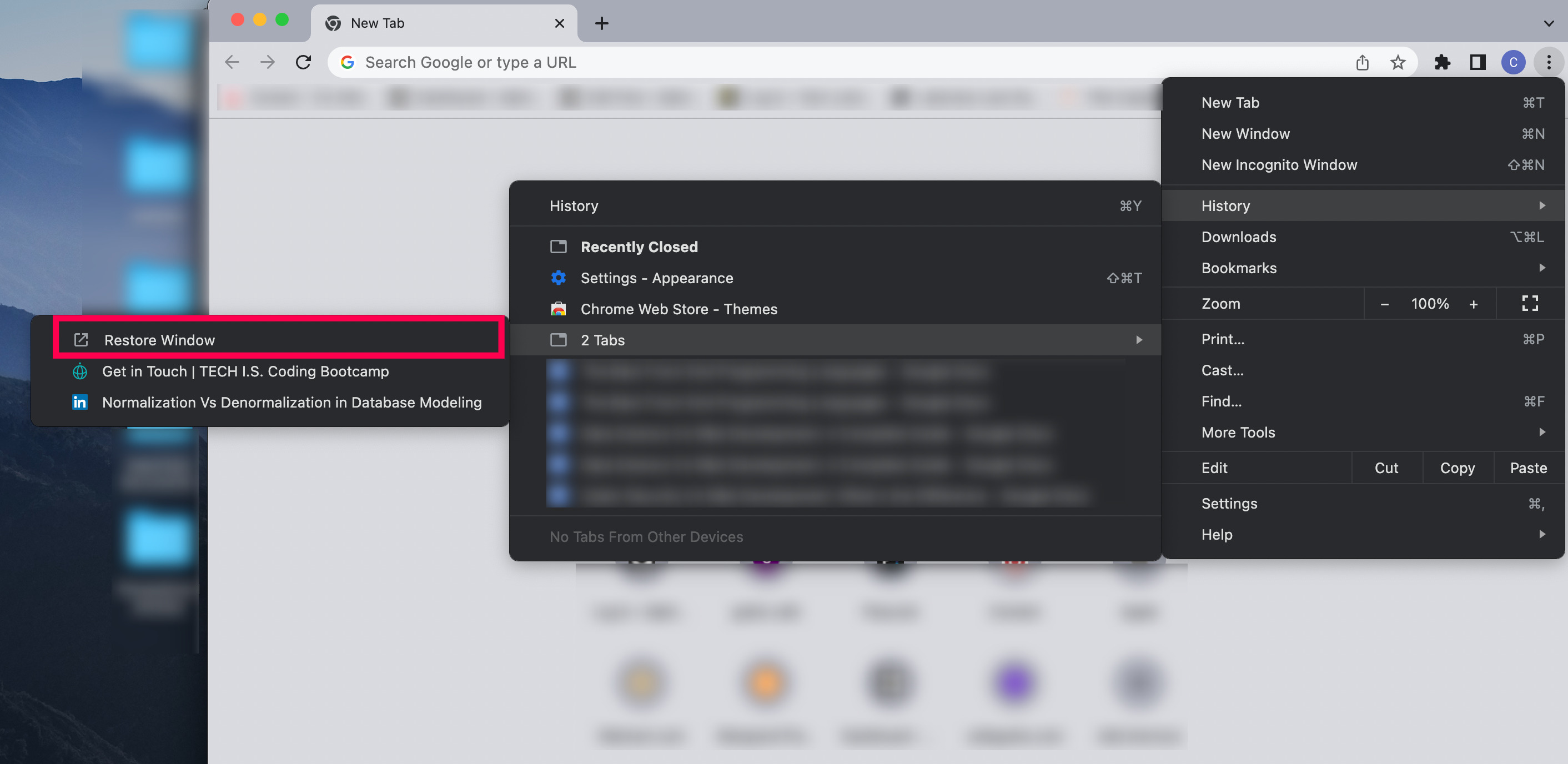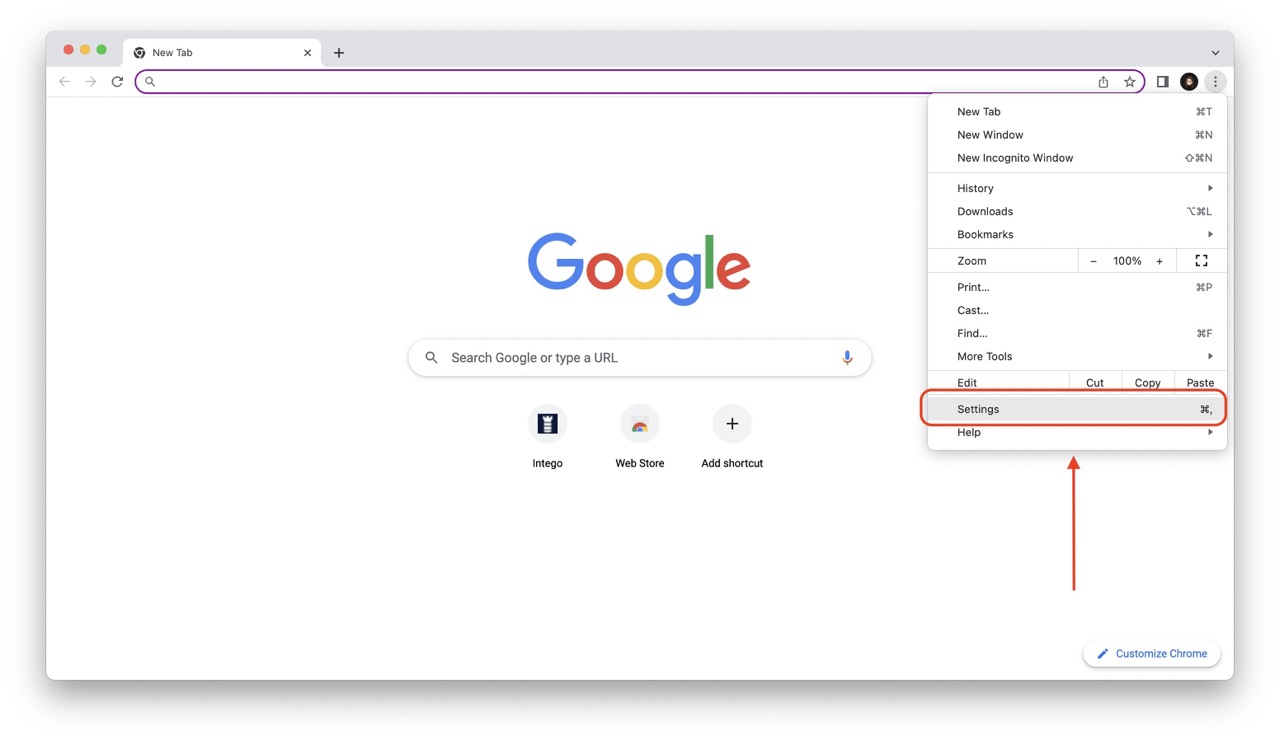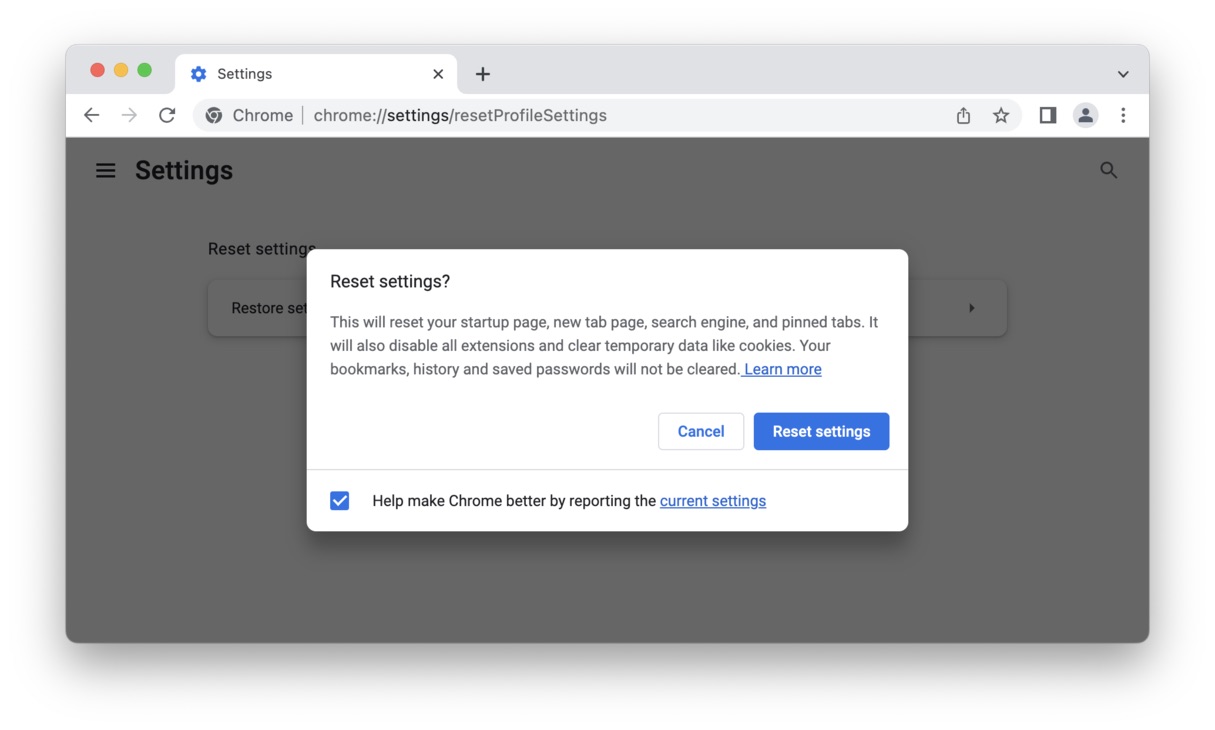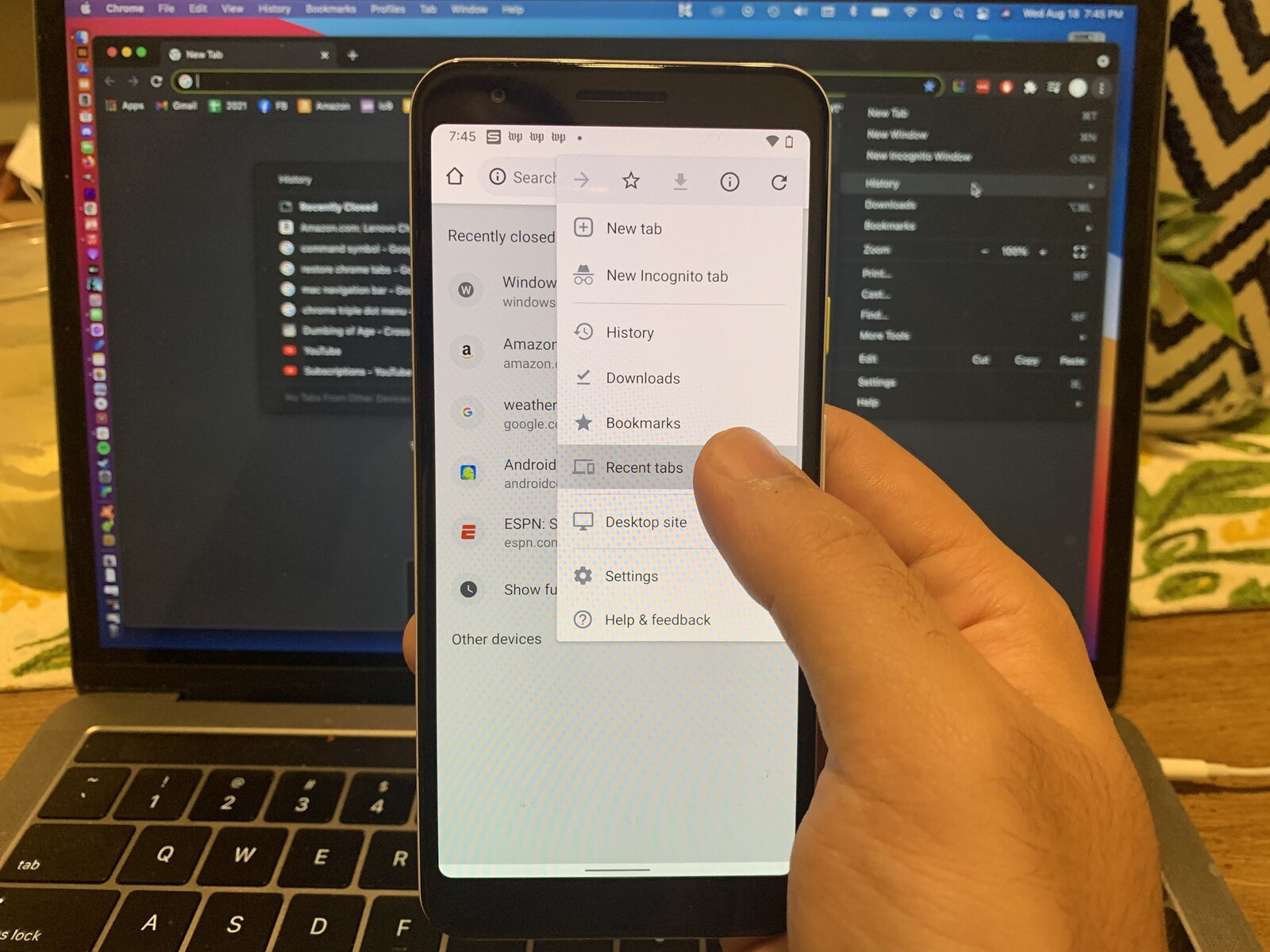Introduction
Restoring tabs in Chrome can be a lifesaver when you accidentally close a tab or need to revisit a webpage you were browsing earlier. Whether you're a casual internet user or a seasoned multitasker, knowing how to restore tabs in Chrome can significantly improve your browsing experience. This article will guide you through various methods to effortlessly restore tabs in Chrome, ensuring that you never lose access to important webpages or disrupt your workflow.
From utilizing built-in features to leveraging handy keyboard shortcuts and Chrome extensions, there are multiple ways to restore tabs in Chrome. Understanding these methods can save you time and frustration, allowing you to seamlessly pick up where you left off and stay productive while browsing the web.
Let's dive into the different techniques for restoring tabs in Chrome, empowering you to navigate the digital landscape with ease and efficiency. Whether you accidentally closed a crucial tab or simply want to revisit a webpage from your browsing history, the following methods will equip you with the tools to effortlessly restore tabs in Chrome.
Using the History Menu
One of the simplest and most effective ways to restore tabs in Chrome is by utilizing the History menu. This method allows you to access a comprehensive list of previously visited webpages, making it easy to restore tabs that you may have accidentally closed or need to revisit.
To access the History menu, simply click on the three-dot menu icon located in the top-right corner of the Chrome browser window. From the dropdown menu, hover your cursor over the "History" option to reveal a list of additional menu items. Click on "History" to open the History tab in a new Chrome window.
Once you've accessed the History tab, you'll be presented with a chronological list of webpages you've visited during your browsing session. This list includes the titles of the webpages as well as the timestamps indicating when they were visited. You can scroll through this list to locate the specific webpage or tab you want to restore.
Upon identifying the webpage or tab you wish to restore, simply click on the entry in the History tab. Chrome will then open the selected webpage in a new tab, allowing you to seamlessly resume your browsing experience. This straightforward method provides a quick and convenient way to restore tabs in Chrome without the need for any additional extensions or complex procedures.
By leveraging the History menu, you can effortlessly retrieve closed tabs or revisit previously viewed webpages, ensuring that you maintain continuity in your browsing activities. This method is particularly useful when you need to quickly retrieve a tab without having to recall the exact URL or title of the webpage.
In addition to restoring tabs, the History menu in Chrome also serves as a valuable tool for reviewing your browsing history and accessing previously visited webpages. Whether you're conducting research, revisiting informative articles, or simply retracing your online footsteps, the History menu offers a user-friendly interface for managing and restoring tabs in Chrome.
Overall, the History menu provides a straightforward and accessible method for restoring tabs in Chrome, making it an essential feature for users who value efficiency and convenience in their web browsing experience. Whether you're a casual internet user or a productivity-oriented professional, mastering the use of the History menu can significantly enhance your ability to manage and restore tabs in Chrome.
Using the Recently Closed Tabs Menu
Another convenient method for restoring tabs in Chrome is by utilizing the Recently Closed Tabs menu. This feature provides a quick and efficient way to retrieve tabs that you may have accidentally closed or need to revisit. Whether you closed a tab by mistake or simply want to reopen a recently closed webpage, the Recently Closed Tabs menu offers a seamless solution for restoring tabs in Chrome.
To access the Recently Closed Tabs menu, you can right-click on an open tab within the Chrome browser window. This action will prompt a dropdown menu to appear, displaying various options related to managing tabs. Among these options, you will find the "Reopen closed tab" feature, which allows you to access a list of tabs that were recently closed.
Upon selecting the "Reopen closed tab" option, a submenu will appear, presenting a chronological list of tabs that were closed during your browsing session. This list includes the titles of the closed tabs as well as the timestamps indicating when they were closed. You can browse through this list to identify the specific tab you wish to restore.
Once you've located the tab you want to reopen, simply click on the entry in the Recently Closed Tabs menu. Chrome will then open the selected tab in a new browser window, seamlessly restoring your access to the previously closed webpage. This straightforward process enables you to swiftly recover closed tabs without the need for extensive navigation or manual URL entry.
The Recently Closed Tabs menu serves as a valuable tool for managing and restoring tabs in Chrome, offering a user-friendly interface for accessing recently closed webpages. Whether you accidentally closed an important tab or simply want to revisit a webpage from your browsing session, this feature streamlines the tab restoration process, allowing you to maintain continuity in your web browsing activities.
In addition to its tab restoration capabilities, the Recently Closed Tabs menu also provides insights into your browsing history, allowing you to review and reopen tabs from previous sessions. This functionality enhances your ability to navigate and manage your browsing history, ensuring that you can effortlessly retrieve closed tabs and seamlessly resume your online activities.
Overall, the Recently Closed Tabs menu in Chrome offers a convenient and efficient method for restoring tabs, catering to the diverse needs of users who value accessibility and ease of use in their web browsing experience. By mastering the use of this feature, you can confidently manage and restore tabs in Chrome, empowering you to navigate the digital landscape with efficiency and convenience.
Using the Keyboard Shortcut
Utilizing keyboard shortcuts is a time-saving and efficient way to navigate and manage web browser tabs. In Chrome, there is a simple and effective keyboard shortcut that allows you to restore recently closed tabs with just a few keystrokes. This method is particularly useful for users who prefer quick and seamless navigation without relying on mouse clicks or menu navigation.
To restore a recently closed tab using the keyboard shortcut, simply press "Ctrl + Shift + T" on your keyboard. This action prompts Chrome to reopen the most recently closed tab, allowing you to swiftly regain access to the webpage you were browsing. By pressing this keyboard shortcut repeatedly, you can sequentially reopen previously closed tabs, effectively restoring your browsing session to its previous state.
The "Ctrl + Shift + T" keyboard shortcut serves as a valuable tool for restoring tabs in Chrome, providing a convenient and intuitive method for managing your browsing history. Whether you accidentally close a tab or need to revisit a webpage from your recent session, this keyboard shortcut offers a seamless solution for restoring tabs without interrupting your workflow.
This efficient keyboard shortcut empowers users to navigate and manage their tabs with ease, enhancing the overall browsing experience. By incorporating this method into your browsing routine, you can quickly recover closed tabs and maintain continuity in your online activities. Whether you're a multitasking professional, a research-oriented student, or a casual internet user, mastering the "Ctrl + Shift + T" keyboard shortcut can significantly improve your ability to manage and restore tabs in Chrome.
In addition to its tab restoration capabilities, the "Ctrl + Shift + T" keyboard shortcut also provides a streamlined approach to accessing your browsing history. This feature allows you to effortlessly reopen closed tabs from previous sessions, offering a convenient way to revisit webpages and maintain a comprehensive view of your browsing activities.
Overall, the "Ctrl + Shift + T" keyboard shortcut in Chrome offers a user-friendly and efficient method for restoring tabs, catering to the diverse needs of users who value speed and simplicity in their web browsing experience. By integrating this keyboard shortcut into your browsing habits, you can confidently manage and restore tabs in Chrome, ensuring a seamless and productive online experience.
Using the Chrome Extensions
Chrome extensions offer a versatile and customizable approach to enhancing the functionality of the Chrome browser, including the ability to restore tabs with precision and efficiency. By leveraging specialized extensions, users can access advanced tab management features, streamline the tab restoration process, and personalize their browsing experience to suit their specific needs.
One notable extension for tab management is "Session Buddy," which provides comprehensive tools for organizing and restoring tabs in Chrome. This extension allows users to save and manage multiple browsing sessions, effectively preserving sets of tabs for future access. With Session Buddy, users can effortlessly restore entire browsing sessions, making it an invaluable tool for multitaskers, researchers, and individuals who frequently work with multiple tabs.
Another popular extension, "Tab Wrangler," offers automated tab management capabilities, allowing users to set criteria for tab closure and restoration based on their browsing habits. This extension automatically closes inactive tabs and provides a convenient interface for restoring closed tabs, enabling users to maintain a clutter-free browsing environment while retaining the flexibility to revisit closed webpages as needed.
For users who prioritize visual organization and efficiency, the "One Tab" extension presents a compelling solution for tab management. This extension consolidates multiple open tabs into a single, easily accessible list, reducing tab clutter and improving system performance. Additionally, One Tab allows users to restore individual tabs or entire tab groups with a single click, offering a streamlined approach to tab restoration in Chrome.
Furthermore, the "Tab Snooze" extension introduces a unique feature that enables users to temporarily remove tabs from their current browsing session and set specific times for their automatic restoration. This functionality is particularly beneficial for individuals who want to declutter their current browsing environment while ensuring that important tabs resurface at designated times, effectively balancing productivity and organization.
In addition to these extensions, the Chrome Web Store offers a diverse range of tab management tools, each designed to cater to specific user preferences and browsing habits. Whether users seek advanced tab organization, automated tab closure and restoration, or streamlined tab consolidation, the availability of Chrome extensions provides a wealth of options for customizing the tab restoration process to align with individual needs and preferences.
By integrating these extensions into their Chrome browser, users can elevate their tab management capabilities, streamline the tab restoration process, and personalize their browsing experience to optimize productivity and organization. The flexibility and functionality offered by Chrome extensions empower users to tailor their tab restoration workflows, ensuring a seamless and efficient browsing experience that aligns with their unique preferences and habits.







